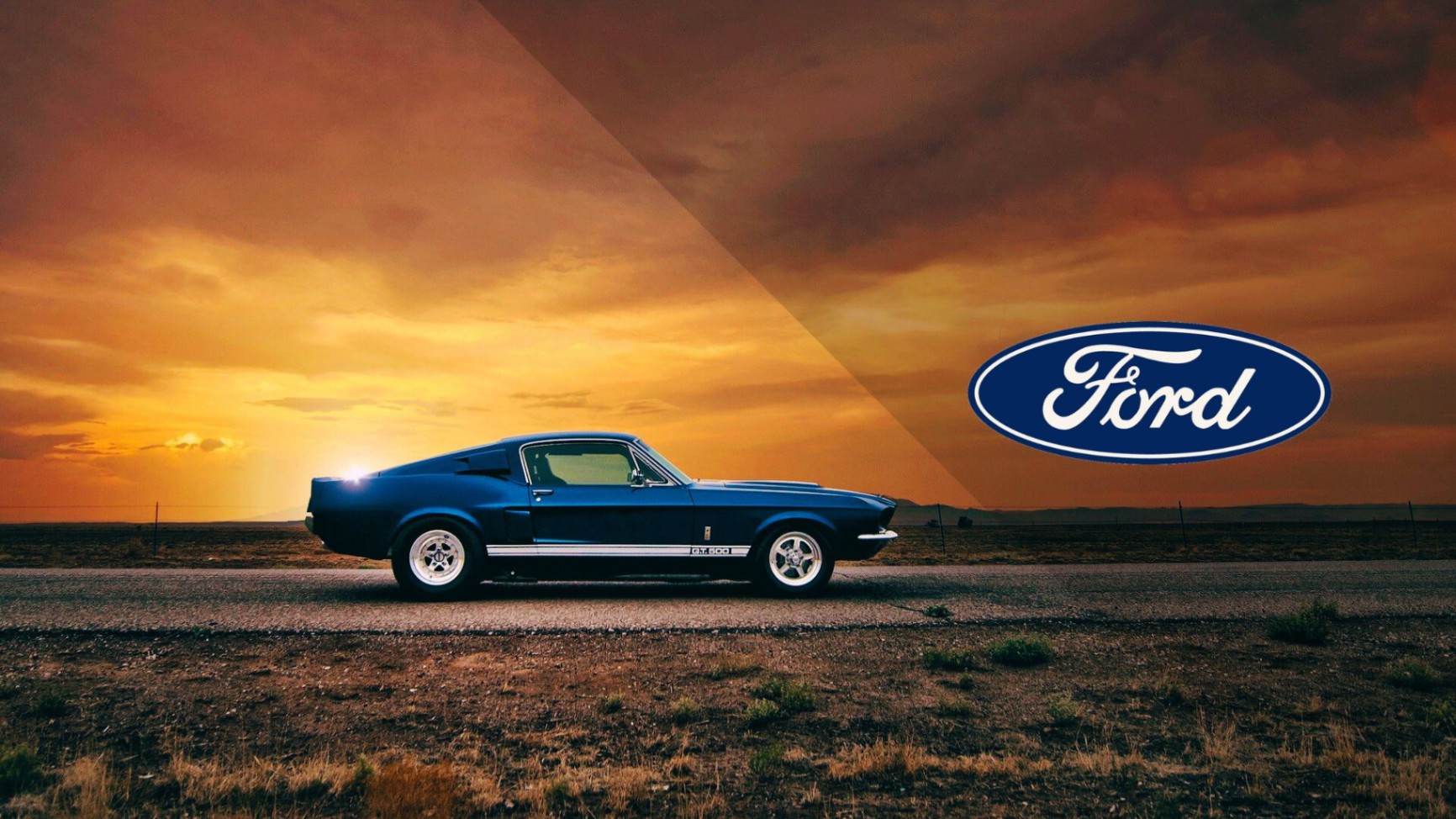
How did he go from being a farm boy to founding the world’s largest car empire? In this video, we’ll dive into the life of the visionary who defied all odds and built an empire with the iconic Model T. Sit back and discover how Henry Ford redefined the industry and became a legend.
The Beginnings
Born into a farming family in 1863 in Dearborn, Michigan, Henry Ford seemed destined to follow in his father’s footsteps and take over the family business. However, from an early age, his restless mind and passion for mechanics drew him away from farm work.
At 12 years old, his father gave him a pocket watch. What for many would have been a simple toy became an object of study for Henry. With surprising skill, he took the watch apart piece by piece, learning to identify each component and its function. In no time, Henry was not only able to assemble and disassemble the watch with ease, but he also began repairing watches for neighbors and relatives. This made him a local celebrity, earning the nickname "the watch repairman."
At 13, he had the opportunity to attend a local fair where a steam engine was on display. The power and complexity of this machine completely captivated Henry. He spent hours observing every detail, trying to understand how it worked and what made it so powerful. From that moment on, he became even more dedicated to exploring the world of mechanics, experimenting with mechanisms like mills and any machine he could get his hands on.
At 15, he participated in a school trip to Detroit, the city that would become the center of the burgeoning automotive industry. Walking through streets filled with mechanical workshops and seeing the first rudimentary cars in action, Henry was mesmerized.
Inspired, he decided to build his own engine. With very basic tools and a lot of determination, he tirelessly worked on his project. Using scrap parts and recycled materials, he managed to bring to life a small steam engine that functioned in a rudimentary way. From that moment, he knew his future lay in mechanics and innovation.
He attended the local primary school until the age of 15. However, his restless mind and lack of interest in academic subjects led him to drop out of formal education. For Henry, the real school was the real world.
His disdain for farm work was evident, and his father, William Ford, was concerned. The two often argued, as William didn’t understand his son’s passion for machines.
At 16, Henry Ford suffered one of the most painful losses of his life: the death of his mother, Mary Ford. She was his main support, his confidante, and the only reason he had stayed on the farm. After her death, Henry felt he had no further ties to rural life. His dislike for farm life, already strong, intensified.
He then left school for good and moved to Detroit, the cradle of the emerging automotive industry. There, he began working as an apprentice mechanic, absorbing everything he could about engine operation and car design.
It wasn’t easy for young Ford to find work in a city filled with men more experienced than he was. However, he managed to get an apprenticeship at James Flower & Brothers Machine. In this company, he worked long hours for a wage of $2.60 a week. Despite the modest conditions, he was excited by the opportunity to learn and gain experience in the industrial world.
But Henry faced the difficulty of paying rent for his room. His salary wasn’t enough to cover his basic expenses, so he decided to take a nighttime job as a jeweler. For six hours each night, six days a week, he cleaned and repaired watches, earning an additional $3.
At the age of 19, Henry returned to his family home for a short period. While living there, his father bought a steam engine to help with farm work. He spent hours watching the steam engine, studying its mechanisms, and trying to understand its operation. His father taught him the basic principles of operating and maintaining the machine. Henry learned quickly and soon became an expert in steam engines. His skill was such that a neighbor even paid him $3 to repair his own steam engine.

Steam Engines
His fame as an expert reached the ears of the Westinghouse Engine Company, a leading steam engine manufacturing company based in Schenectady, New York. Impressed by his reputation, they decided to hire him. His job was to travel throughout Michigan, repairing and installing the company’s steam engines.
In 1885, Henry Ford met Clara Jane Bryant, a 19-year-old woman. The attraction was immediate, and they quickly fell in love. The following year, they married in a simple ceremony. As a wedding gift, his father gave him 40 acres of land. At that time, most people would have expected Henry to use the land to build a farm or family home. However, he had other plans. The land his father gave him was the perfect place to build a mechanical workshop where he could put his ideas into practice.
They later moved to Detroit, Michigan, seeking new opportunities. It was there that Henry, while reading a magazine, came across an article about the gasoline engine, an invention by the German engineer Nikolaus Otto. The gasoline engine was much more efficient and powerful than the steam engine, which was the dominant technology at the time. Obsessed with this, Henry dedicated himself to studying and experimenting in his mechanical workshop.
One day, while searching for parts for his engine, he came across a man who had a working gasoline engine. However, this man didn’t understand how the engine worked; he only knew that a spark was necessary for it to function. Henry had no knowledge of electricity, so he decided to find work in a related field.
He secured a job as a night engineer at Edison Illuminating Company in Detroit, earning $40 a month. The company used steam engines to generate electricity, and his job was to repair and maintain the engines. The work wasn’t continuous; during the hours when the engines were functioning properly, Henry had free time. He used this time to learn everything he could about electricity.
In 1893, his son, Edsel Bryant Ford, was born. Edsel’s arrival filled the home with joy and marked a new chapter in his family life. Just three months after Edsel’s arrival, Henry received an important recognition at work. He was promoted to Chief Engineer at Edison Illuminating Company, which meant a significant increase in his salary, from $40 to $100.
But Henry’s greatest achievement that year was the creation of his first working gasoline engine. Working tirelessly in his mechanical workshop, he finally managed to get an engine running on gasoline.
His First Car
On June 4th of that year, at 1:30 in the morning, Henry Ford completed the construction of his first gasoline car in his mechanical workshop in Detroit. This vehicle, known as the Quadricycle, was a rudimentary but revolutionary prototype. It was the first time a vehicle was successfully powered by a gasoline engine.
It had a single-cylinder engine with 4 horsepower, a tubular frame, and four solid wooden wheels. However, this vehicle was not perfect. Henry soon identified some issues that needed attention. The Quadricycle had no brakes, nor could it go in reverse. Additionally, the engine tended to overheat.
But far from being discouraged, he saw these problems as an opportunity to improve his design. With his inquisitive mind and innovative spirit, he set to work on solutions. He made modifications that addressed the initial problems of the Quadricycle, making it a more reliable and safer vehicle.
With his improved Quadricycle, he participated in several races and exhibitions, attracting public attention and sparking the interest of potential investors. A year after the creation of the Quadricycle, he decided to sell it for $200. He used this money to finance his next project.
With the support of Detroit’s mayor, William Thompson, who provided him with funding and space in an old wagon factory, Henry began constructing his second experimental car.
This new vehicle, completed in July of ’99, represented a significant advancement. It was larger, heavier, and more durable, with a two-cylinder engine and a top speed of 30 miles per hour. It also incorporated several technical innovations, such as an improved transmission system and a more robust suspension. This achievement caught the attention of investors and businessmen who saw the potential in Henry Ford’s ideas.
With the help of William Murphy, a friend, mechanic, and businessman, Henry Ford conducted a test drive of his second experimental car. Murphy was so impressed with the vehicle that he wanted to become part of Ford’s commercial venture, the Detroit Automobile Company. This company became Henry’s first serious attempt to produce and market automobiles.
However, his ideas for improving his car didn’t align with those of the investors, who were looking for passenger cars. Additionally, the company faced production difficulties. The car’s parts were manufactured in different companies, causing delays and production pauses.
The vehicle, known as the Delivery Wagon, took six months to build, and only 20 units were produced in the first two years. Sales were low, and the company was not satisfied with the vehicle’s performance. Faced with this situation, Henry was fired. It was a tough blow, but he didn’t lose hope.

Race Cars
He decided to focus on race cars, as this sport was gaining popularity in the United States and offered an ideal stage to showcase vehicles. Henry began designing and building race cars and participated in several competitions.
In this context, a unique opportunity arose: the Challenge Cup race. In this event, Henry Ford, driving his 26-horsepower race car, faced Alexander Winton, the top driver of the time, whose car was considered superior to Ford’s. In a closely contested race, Ford managed to surpass Winton and claim victory.
This not only demonstrated Ford’s ability to create fast and reliable cars but also generated significant media buzz and attracted the attention of investors who had previously doubted his project.
The Creation of Ford Motor Company
In 1903, at the age of 40, he founded the Ford Motor Company, with himself as the company’s chief engineer. He was responsible for overseeing the design and production of automobiles. However, his approach began to create tensions with some of the investors. They wanted Ford to focus on producing more conventional and affordable passenger cars for the public. So, they brought in Henry Martyn Leland as the general manager.
Leland was an experienced engineer with an extensive background in the automotive industry. He was in charge of the daily management of the company, organizing production, and satisfying the investors. Henry Ford, who remained as chief engineer, began to feel limited in his creative freedom and control over the company.
The differences between Henry and the investors intensified, and in a moment of great tension, he decided to leave the Ford Motor Company. It’s said that he was so angry about the situation that he resigned with the phrase, “I resign, determined never to take orders again.”
After that, the company was renamed Cadillac Motor Company, a name chosen in honor of the founder of the city of Detroit.
The Creation of the Model T
Convinced of his vision, he sought new opportunities to demonstrate his talent and capture the public’s attention. So he partnered with Tom Cooper, a former cyclist and experienced mechanic. Together, they founded the Henry Ford Company, a business dedicated to the design and construction of race cars.
In 1902, Ford and Cooper presented to the world a revolutionary creation: the Ford 999. A race car equipped with an 80-horsepower engine, something never before seen at the time.
To drive this powerful vehicle, Ford and Cooper sought a driver. Their choice fell on Barney Oldfield, a former bicycle racer with great skill and audacity. Oldfield, who had never driven a car before, accepted the challenge with enthusiasm.
Oldfield’s debut behind the wheel of the Ford 999 was an overwhelming success. The car captivated the public with its power and performance. The Ford, Cooper, and Oldfield trio became a sensation in the racing world.
Their passion for speed drove them to create increasingly powerful and fast cars. Ford and Barney Oldfield embarked on a new challenge: breaking the land speed record. To do this, they developed an even more advanced version of the Ford 999, equipped with a 100-horsepower engine.
On January 22, 1904, on Daytona Beach, Florida, Oldfield got behind the wheel of the modified Ford 999. With determination and bravery, Oldfield floored the accelerator and reached an astonishing speed of 91 miles per hour (147 kilometers per hour). The audience was stunned by this feat. Ford and Oldfield had achieved the impossible, surpassing the previous record by more than 12 miles per hour (20 kilometers per hour). The success of the Ford 999 in races reignited investors’ interest in the company.
In turn, Henry founded Ford Motor Company. And this time, he was determined to do things differently. Unlike his previous ventures, which focused on expensive and exclusive race cars, Ford Motor Company had a clear objective: to create a practical, affordable, and durable vehicle for the masses. Henry said, “We will build a car for the great multitude.”
Convinced that success depended on superior design, Ford hired a team of young talent. Together, they worked tirelessly for five years, creating and testing over 20 prototypes.
Ford was a perfectionist. He wasn’t satisfied with anything less than the best. Again and again, he reviewed the designs, seeking ways to improve them, make them simpler, more efficient, and more durable. Finally, after years of hard work and dedication, Ford and his team came up with the perfect design: the Model A.
It was launched in 1903. While it wasn’t perfect, this car marked a milestone in the history of the automotive industry. It was a simple, robust, and relatively affordable vehicle, making it accessible to people who previously couldn’t even dream of owning a car.
However, Henry was not a man to rest on his laurels. He was always looking for new ways to improve his products and processes. One day, while traveling to Chicago by train, he had the opportunity to visit a slaughterhouse. Observing how the cattle were processed on an efficient assembly line, Ford had a revelation.
Inspired by what he had seen, he returned to Michigan and set his plan in motion: to implement the first moving assembly line in history. Workers were positioned along the line, each with a specific task to perform. The car’s chassis moved along the line, and each worker added a component or performed a specific task. The result was a dramatic increase in production.
Initially, the factory was small and employed only a few dozen people. However, as demand for Ford cars grew, the factory expanded as well. After a while, Ford Motor Company was employing over 300 people.
In 1906, Ford introduced the Model N, in which he fully implemented the assembly line in production. As a result, there was a significant increase in efficiency and productivity. This made the Model N even more accessible to the public and boosted its sales.
Up to that point, the company had relied on external suppliers for many of the car’s components. This reduced flexibility and control over the production process. So, they decided to start manufacturing their own components. This allowed them to improve quality, reduce costs, and increase production efficiency. In addition to this, Henry discovered vanadium steel. This new type of steel was about three times stronger than traditional steel, yet lighter.
In 1908, Ford introduced the world to the Model T. One of its innovative features was the use of vanadium steel in its chassis and body, making the car stronger, more durable, and lighter, which translated into better performance and greater fuel efficiency.
The Model T was an overwhelming success, becoming the most popular car of its time. Its price was very affordable, allowing millions of people to finally fulfill their dream of owning a car. Just days after its launch, Ford received over 15,000 orders.
There were so many orders that Ford’s original factory in Detroit couldn’t meet the demand. So he decided to build a new factory in Highland Park, Michigan. With an area of 86 acres (35 hectares) and the capacity to employ over 30,000 workers, it was the largest and most modern factory in the world.
Thanks to this, Ford was able to significantly increase the production of the Model T. At the original Detroit factory, it took 12 hours to assemble a car. At the Highland Park factory, the production time was reduced to just 90 minutes.
By 1914, only six years after the launch of the Model T, Ford was already producing more than 300,000 cars per year. This figure was greater than the total production of all other car manufacturers combined. Ford's dominance in the market was absolute. By 1916, the production of the Model T reached one million units per year. By that time, approximately half of the cars in the world were Fords.

Purchase of Shares
While the assembly line allowed Ford to significantly increase production and reduce costs, it also brought some unexpected problems. The assembly line workers began to feel bored and demotivated. Performing the same repetitive task for hours became monotonous for them.
Additionally, some craftsmen found it insulting to be assigned only a small task instead of being able to assemble an entire car. As a result, workers began leaving the company in search of better opportunities.
To address this crisis, Henry doubled his workers' minimum wage to $5 per day, a very high figure for the time. He also implemented an eight-hour workday with a one-hour break in the middle. These measures not only reduced employee turnover but also attracted thousands of new workers to the company.
This success raised doubts among competitors. Many believed that these unsustainable measures would lead to the ruin of Ford Motor Company. However, Henry was convinced that a happy, well-paid worker was a more productive worker. And his bet paid off.
Productivity at Ford factories increased significantly, allowing him to continue reducing costs and maintaining his leadership in the industry. Moreover, many companies were forced to implement similar measures to retain their workers.
The success of Ford Motor Company attracted many investors who sought to profit from the company's growing popularity. However, Ford was not pleased with the investors' interference in decision-making. So he bought all the company's outstanding shares, becoming the sole owner of Ford Motor Company, which at that time was the largest automotive company in the world.
Henry appointed his son Edsel as the company's president in an attempt to secure the future of his vision. However, he was unwilling to relinquish full control of the company, leading to some tension between father and son.
For many years, the Model T was the only car produced by Ford Motor Company. However, new competitors began to emerge in the automotive market, offering cars that were more modern, comfortable, and better performing than the Model T.
Executives at Ford Motor Company and his own son, Edsel, warned Henry about the need to develop a new car model to compete with these rivals. But he refused to change. He was convinced that the Model T was the perfect car for the general public and that there was no need for a new model.
Sales of the Model T began to decline, and the company lost ground to its competitors. Faced with this situation, Henry Ford was forced to make a difficult decision: to cease production of the Model T.
Immediately afterward, he began working on the development of a new car, which was called the Model A. It was a completely new car. It had a more modern design, was more comfortable, and had better performance than the Model T.
For the production of the Model A, Ford decided to implement a radical approach. He wanted his company to control every step of the process, from sourcing raw materials to final assembly.
While Henry's focus on vertical integration had some benefits, it also generated problems. The complexity of the supply chain and the lack of flexibility in production made it difficult to adapt to market changes. Additionally, he was not as attuned to new market trends as his competitors.
General Motors and Chrysler, for example, launched cars with more innovative designs and features that were more attractive to the public. As a result of these factors, Ford Motor Company lost ground to its competitors.
Check out more at: The History of Chevrolet: The Legend Behind the Wheel
In 1929, the Great Depression hit the global economy hard. Car sales plummeted, companies were forced to close, and millions of people lost their jobs. Ford Motor Company was no exception; they had to lay off many employees to get through the crisis.
At the age of 49, his son Edsel Ford died of stomach cancer. Edsel's death was a severe blow to Henry. Already 80 years old, he no longer had the energy or health to lead the company alone. He was forced to find a new leader for Ford Motor Company. Finally, in 1947, Henry Ford II, his grandson, took over as president of the company.
Ford Today
Henry Ford died on April 7, 1947, at the age of 83. His death marked the end of an era in the history of the automotive industry.
Under his grandson's leadership, the company experienced unprecedented growth. Successful new car models, such as the Mustang and Thunderbird, were launched, and the company expanded into new markets around the world.
However, the 1970s was a difficult period for Ford. The oil crisis and competition from Japanese companies affected it severely. To face these challenges, Ford Motor Company restructured, modernized production plants, and launched new, more fuel-efficient car models. In the 1980s and 1990s, the company recovered and became profitable again. Successful new models, such as the Taurus and Explorer, were launched, and the company expanded into new markets, such as China and Latin America.
Also read: The Bombs Didn’t Stop Him | The Incredible Story of Honda
In the new millennium, Ford Motor Company has faced new challenges, such as the 2008 global financial crisis and increased competition from tech companies. However, the company has managed to adapt to these changes and remain one of the largest in the world. Today, it is committed to innovation and sustainability.
Ford Motor Company is a company with a long and rich history. It has gone through tough times, but it has always managed to overcome challenges and move forward. Henry Ford, its creator, was a visionary, an innovator, and a leader who revolutionized the automotive industry and changed the world forever. With his vision, he allowed millions of people to gain access to mobility.
His production methods had a profound impact on other industries and helped shape the modern world. His story reminds us that success is not just a destination but a journey, a path paved with dreams, sweat, and an unbreakable spirit.








